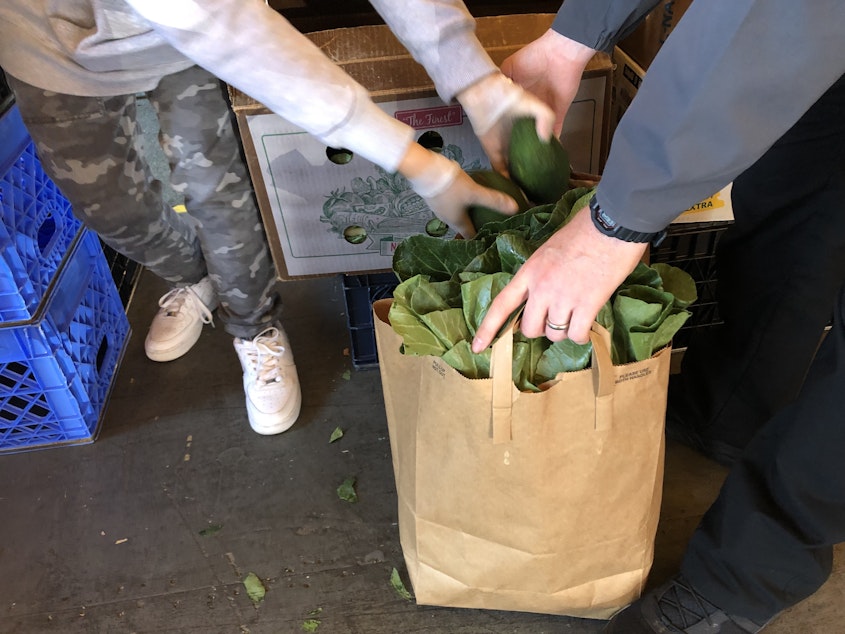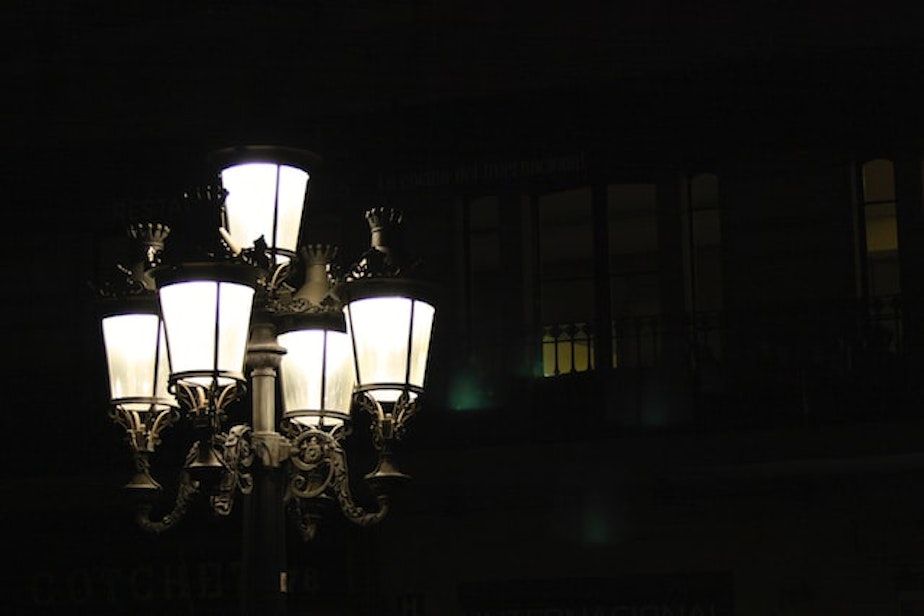Season of goodwill and food banks: Today So Far

As we head into a season of giving, food insecurity is one issue we can address in the Seattle area.
This post originally appeared in KUOW's Today So Far newsletter for November 28, 2022.
To all the regular TSF readers out there: I only half ruined the turkey. Let's just say it wasn't as much of a roast turkey as it was a steamed turkey.
It feels awkward to talk about triumphs and trials of what is essentially a feast, when our region is also dealing with significant strains on places like food banks. This is something that KUOW's Ruby de Luna has been covering for quite a while now, especially amid the pandemic. Earlier this year, Ruby reported that food insecurity in Washington has nearly tripled since the pandemic began. Inflation certainly hasn't helped. More recently, she has covered how Seattle-area food banks are trying to meet demand and adapt to challenges. This increasing strain on food banks has been going on for a while now.
Many folks might be unaware that food banks often have their own supply chains, such as grocery store donations, donations from people, and so forth. Seattle's Food Lifeline is a local organization that supplies banks with donations. Ryan Scott with Food Lifeline recently told KUOW that, "In a normal year, we have somewhere between 4-5 million pounds of food in our warehouse, moving out for distribution. Right now, we just have a little over a million.”
While talking with Seattle Now, Ruby pointed out that conditions at food banks are often early indicators of larger economic struggles. Strain at a food bank today could indicate more widespread financial strain in the months ahead. That is something Seattle's food banks have been watching for. As many pandemic-related programs ended over the past few months, food banks began bracing themselves for an anticipated increase in demand.
Looking at Seattle-area food banks, people are using them more and more as a means of supplementing their budgets — use the food bank, and then you have enough money for gas. On top of that, the banks are struggling to keep up. For example, grocery stores that often donate food have been unable to contribute as much as usual these days.
Sponsored
"Demand has grown, especially since the pandemic, and food banks have been terrific in trying to meet the needs of people," Ruby told Seattle Now. "But that is coming at a cost. They were able to get federal assistance through Covid emergency measures. That helped, but everybody is feeling the pinch. With retailers, they are also getting hit with supply chain issues, which is also why they are not able to donate as much to food banks like they normally have. As a result, food banks are shelling out more money in order to buy food to donate."
One food bank in Ballard recently told Ruby that their annual budget to purchase food before the pandemic was around $300,000. Last year, it was $1.5 million.
Some food banks around Seattle are set up like grocery stores. Instead of getting a bag of food, you go in and shop for what you need. Fresh food from the grocery chains helped with this. Now, Ruby says the banks are getting "creative" to get the food.
"They have worked with P-Patches or farmers who will grow some of the produce for them, and some of them are even planning on having their own gardens. There is more of a shift to providing foods that are nutritious and culturally relevant ... food banks are trying to provide what their clients are requesting, and what their clients are used to having."
Check out Ruby's full conversation with Seattle Now here.
Sponsored
Seattle is not alone in this predicament. NPR reported last month that more than 33 million people are food insecure in the United States. "Food insecure" is a fancy term for "hungry" and/or not able to access food. Five million kids are included in that statistic. The USDA notes that rural areas, families with children, and communities of color are disproportionately affected by this.
As we head into what is hyped as a season of giving and goodwill, perhaps food is one area we can all emphasize. You can support local military families or your neighborhood Little Free Pantry. Have a garden? Join other giving-green-thumbs in the region. We have options for giving.
AS SEEN ON KUOW

Andy Woodford has been a pirate for the last year. He's lived in the area for the last 20 years, but felt priced out onto a boat, where he first met Sir Thomas and other pirates. They're part of a group of self-described “pirates” (minus the pillaging and violence) that live on the waters of the Salish Sea. Despite living on the water, these residents can't escape gentrification and the region's high cost of living. (Alec Cowen / KUOW)
Sponsored
DID YOU KNOW?
There is a lake trail that Cosmo and I often visit. Over the summer, we spotted a couple turtles along the the shore. It got me thinking about how I sometimes would see turtles at Green Lake and other spots. And that got me wondering: Are turtles native to Washington?
Yes, and no. According to Washington's Department of Fish and Wildlife, there are two turtle species native to the state: the northwestern pond turtle and the painted turtle. The painted turtle, which has yellow stripes, seems to be doing OK in our region, but there are ongoing conservation efforts to help the northwestern pond turtle recover. WDFW, however, notes that there are plenty of non-native turtles around the state, often the result of exotic pets being released into the wild. The pond turtle is one such species that has been seen in these parts, such as Lake Washington. Red-eared sliders and snapping turtles have also been noticed around Washington.
ALSO ON OUR MINDS

Sponsored
It's no trick; Merriam-Webster says 'gaslighting' is the word of the year
"Gaslighting" is Merriam-Webster's word of the year. Lookups for "gaslighting" on merriam-webster.com increased 1,740% in 2022 over the year before. But something else happened. There wasn't a single event that drove significant spikes in the curiosity, as it usually goes with the chosen word of the year.

